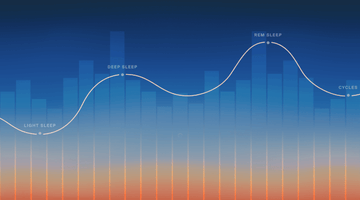Brandon “The Prodigy” Curry, a veteran from Murfreesboro, Tennessee, scored a stunning win over defending champion William Bonac to win the 31st Arnold Classic in March 2019.
Curry received congratulations from Arnold Schwarzenegger, a cheque for $130,000, a Tony Nowak Official Champions Jacket and the champion’s trophy. He won the Arnold Classic for the first time with his wife and four children in the audience.
This got us thinking: We must be able to learn something useful about building muscle from the guy who does it best.
Stay tuned if this is your aim.
Who is Brandon Curry?
Brandon has been on the brink of stardom for a long time and, at the age of 36, his career is well documented online, featuring on sites like bodybuilding.com and many other well known resources.
He was cleaning up house in amateur competitions at just 22 years old, but more impressively, he already had the type of development that other guys spend their whole lives pursuing.
The makings of a world-class physique were plain to see: clean lines, incredible definition, and pure aesthetics.
He continued to squash the amateurs, and he earned his 212 division pro card in 2008, showing that he was here to stay.
He has also been featured in his own web series called Brandon Curry unleashed which is definitely worth a watch if you're interested.
Since then, Brandon has grabbed a dozen top-10 finishes as an IFBB Pro and is now taking the top spot due to all of his hard work
His humble attitude and work ethic will keep him in the race for years to come.
What are Brandon Curry’s muscle training secrets?
It's well documented that his philosophy around training varies with his growth and knowledge as an athlete. But there seem to be 4 areas that come up consistently and referenced by him.
1. Focus on compound movements
Firstly, his love of compound movements – or the big three – is front and centre. This is a reference to the squat, the deadlift and the bench press, which are the moves used in powerlifting.



But why would a bodybuilder favour this type of training and what are the benefits?
It’s all to do with the movements’ effects on testosterone release and the fact that they work large groups of muscles at the same time. This level of stimulation is necessary for growing muscle tissue. It is hard to achieve this when training individual muscles alone.
2. AIM FOR PROGRESSIVE OVERLOAD
Secondly, curry talks about Progressive overload being his aim, mostly in the aspect of intensity. But what is it and how can we use it?
According to Chris Beardsley of strengthandconditioningresearch.com, progressive overload refers to the way in which we use the results of a previous workout to maximum effect when performing subsequent workouts.
After a workout in which we lift heavy weights, all of the various adaptations that contribute to gains in maximum strength are stimulated. After workouts involving light or moderate weights, only increases in muscle fibre size are stimulated (this is why lifting heavy weights leads to greater gains in maximum strength than lifting either light or moderate weights).



Either way, when we come to perform the next workout, we are stronger. It means that we have the option of making progress in the next workout. If we choose this option, we can either lift a slightly heavier weight for the same number of reps, or the same weight for a larger number of reps.
This continual addition of either more reps or more weight is progressive overload. It basically means you should keep making your training more difficult.
Curry prefers the intensity route, so that means he is more likely to keep his sets and reps the same, but increase the weight.
3. USE ACCENTUATED ECCENTRIC BASE TRAINING
(AKA. HEAVY NEGATIVES)
Thirdly, Curry talks about using accentuated eccentric base training (heavy negatives) at the beginning of his training week. It sounds complex but it's not as confusing as you may think.
When you train, you can use three main types of muscle action: concentric, isometric or eccentric. These are present in most moves that you perform. Accentuated eccentrics, however, focus your efforts on the part of the exercise involved with lowering the weight.
This type of training stimulates greater strength and size gains than pure concentric training.
Check out this mildly cheesy explainer video as it gives a great explanation to what heavy negatives are and the benefits to paying attention to this part of an exercise. I've set the video to start midway, at juicy details incase you’re short on time. 💪
There are five potential reasons as to why heavy negatives stimulates more growth:
- There's a greater neural adaptation to eccentric training than to concentric training (Hortobagyi et al.)
- There's a more important force output produced during a maximal eccentric action (greater overload) because you can use a higher external load (Colliander and Tesch 1990).
- There's a higher level of stress per motor unit during eccentric work. Fewer motor units are recruited during the eccentric portion of a movement, thus each of the recruited motor units receives much more stimulation (Grabiner and Owings 2002 , Linnamo et al. 2002). Furthermore, since the nervous system seems to recruit fewer motor units during a maximal eccentric action, the potential for improvement could be greater than with maximal concentric action.
- There's some evidence that maximal eccentric actions will preferably recruit fast-twitch muscle fibers, which are more responsive to muscle growth and strengthening (Nardone et al. 1989, Howell et al. 1995, Hortobagyi et al. 1996). In fact, eccentric training may stimulate an evolution towards a faster contractile profile (Martin et al. 1995).
- Most of the muscle microtrauma to the cells occurring during training is a result of the eccentric action performed (Brown et al. 1997, Gibala et al. 2000). It's been established that this microtrauma acts as the signal to start the muscle adaptation process.
4. FUNCTIONAL MUSCLES I.E. MASTER MOVEMENT
Finally, Curry talks about the idea of functional muscle, which is pretty easy to describe. It basically means looking amazing but still being able to function and move well as an athlete.
This is definitely something individuals should aspire to as they move through their fitness journey and as they get older. Mastery of movement and the body is an essential part of the good life.
We love @hunterfitness and @portal.ido for insights into mobility training and movement practices.
|
What are your thoughts on this mammoth of a performer? If size is your goal, will you implement any of these tactics? We’d love to hear your thoughts.
|






